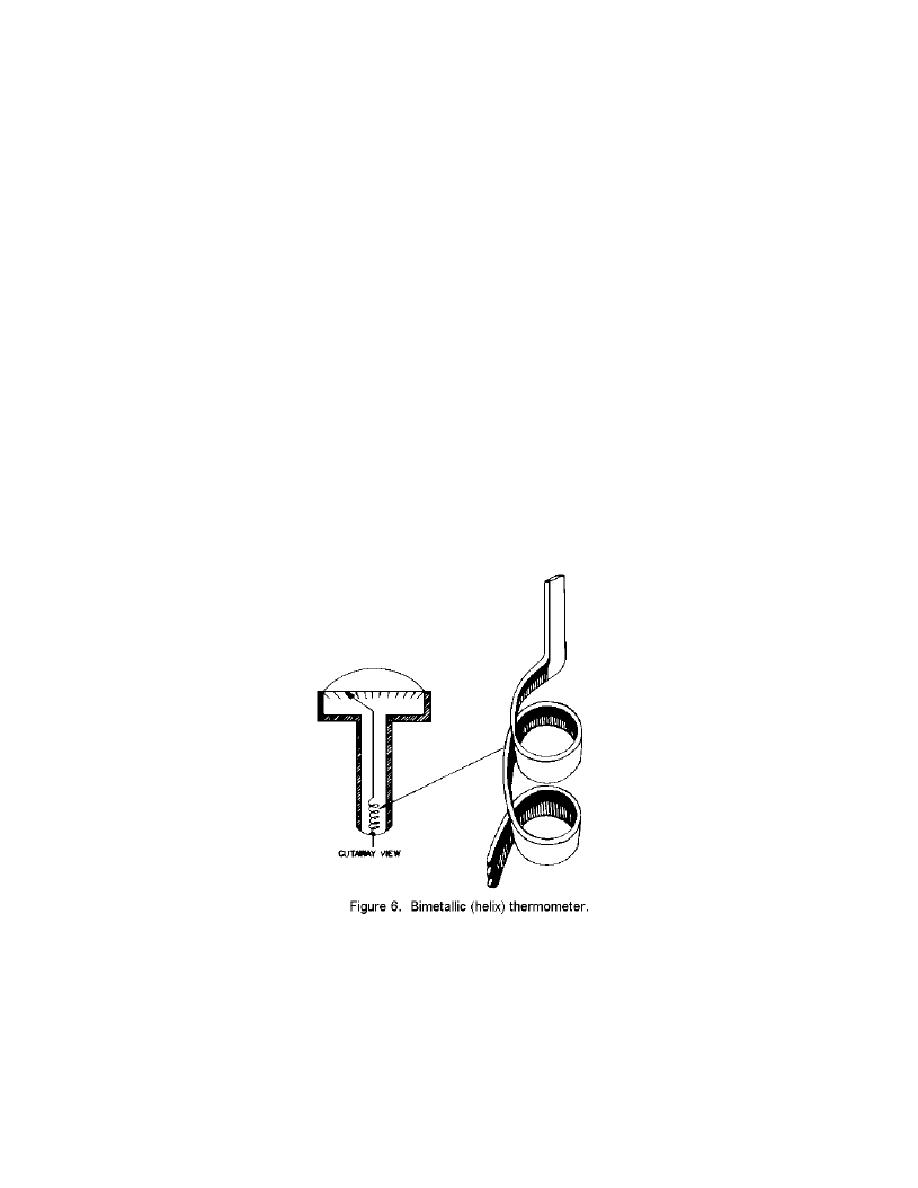
When a substance is subjected to temperature changes, it will either expand or contract.
Thus, the actual size depends to some extent on the reaction of material to heat.
The amount of expansion or contraction is related to the change in temperature and can
be considered a linear function; that is, the amount of expansion can be considered as
some fixed rate per degree of temperature change. Each material has its characteristic
(coefficient of expansion) rate.
A positive coefficient means that the substance expands as the temperature rises. A
negative coefficient indicates that the substance contracts as the temperature rises.
Alloys with widely different coefficients of expansion are welded together for small
thermal scale ranges such as 0, to 100,C. Alloys with smaller differences of expansion
are used for larger scale ranges in the range of -100, to 1,000,C.
6. BIMETALLIC (HELIX) THERMOMETER
There are many versions of the bimetallic thermometer. Another type, which is quite
common, consists of a bimetallic coil (helix) encased in a tube with an indicator and scale
at the top.
In this type the twisting action of the coil causes the long shaft to rotate the pointer. The
thermal element at the bottom of the shaft is the only portion of the thermometer sensitive
to temperature changes.
The bimetallic thermometers, though some of them are very good, are not accurate
enough to be considered as standards. However, they are rugged, inexpensive, and easy
to read (see figure 6).
Even though the bimetallic thermometer is not accurate enough to be considered a
standard, it would have to be used for temperature measurements in the range of 400,C,
if the only other choice is a mercury thermometer. The total immersion set is useful only
to 360,C.
There are other thermometers for high-temperature use such as optical pyrometers. These
are used largely for checking molten metal by the color of the melt. They only give



 Previous Page
Previous Page
